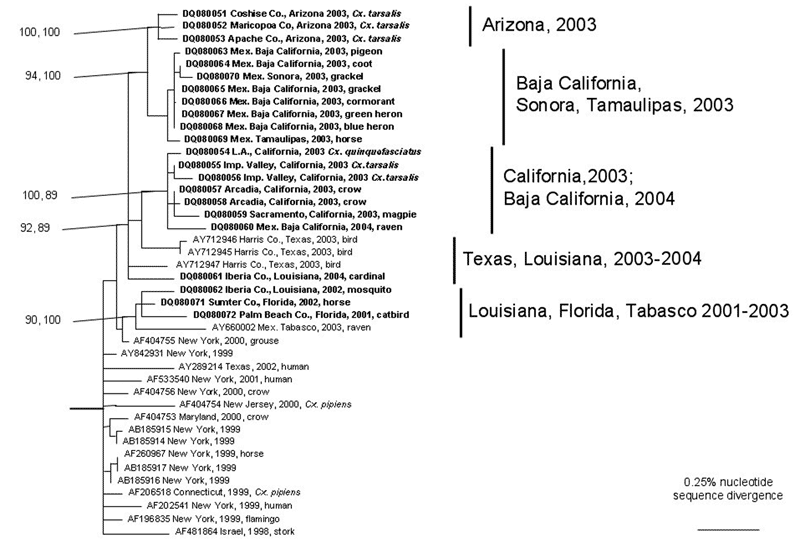Volume 12, Number 2—February 2006
Dispatch
Introductions of West Nile Virus Strains to Mexico
Figure 2

Figure 2. Phylogenetic tree generated from the complete open reading frame of West Nile virus sequences using a Bayesian analysis. Virus strains are labeled by GenBank accession number followed by the state and/or country, year, and host of isolation. Numbers indicate Bayesian probability values followed by neighbor-joining bootstrap values for groups to the right. The tree was rooted by using an outgroup comprised of Old World strains of West Nile virus, including a lineage 2 strain (Table).
Page created: February 02, 2012
Page updated: February 02, 2012
Page reviewed: February 02, 2012
The conclusions, findings, and opinions expressed by authors contributing to this journal do not necessarily reflect the official position of the U.S. Department of Health and Human Services, the Public Health Service, the Centers for Disease Control and Prevention, or the authors' affiliated institutions. Use of trade names is for identification only and does not imply endorsement by any of the groups named above.